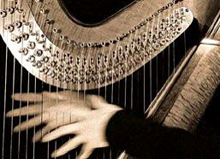|
Safeguard our treasures!
|
|
Here and there
Vandals smash column bases of Susa Apadana Palace
The stone inscriptions have been severed and scattered around the ancient archaeological site, he added. “The reason for the destruction of the artifacts is not clear,” Gahestuni remarked, adding, “The incident probably results from the vandals’ ignorance of the historical significance of the relics.” He went on to say that many problems are caused by the lack of appropriate fencing around the site which covers about 360 hectares. “The Khuzestan Cultural Heritage, Tourism and Handicrafts Department undertook the installation of rods around the zone, but the measure was inadequate and has not prevented unauthorized people from entering the precinct,” Gahestuni explained. According to Gahestuni, the use of concrete and iron rods for demarcation purposes has even led to some damage to the area.
The
Apadana Palace is also being threatened by the construction of a preparatory
school on its perimeter. In early December, Tariana sent letters to
President Mahmud Ahmadinejad, asking him put a stop to the project.
The school building, which is to be four stories tall, will spoil the
horizontal view from the palace ruins. In addition, the historical metropolis
of Susa, which has been inhabited for over 7000 years, is being spoilt
by Shush Municipality’s construction of a passenger bus terminal
in the city’s southern section. Experts
have previously given warning of the chaotic situation at the site,
pointing out that such disorder has facilitated the illegal activities
of smugglers who have managed to carry out excavations in search of
valuable artifacts. --------------------------------------------------------------------------------------------------- Mass Production of Silk Strings of Persian Harp
Silk
String After 150 years of obsolescence, silk string of Iranian musical
instruments will be produced. --------------------------------------------------------------------------------------------------- Farming threatening Sassanid era city Eyvan-e Karkheh
The Khuzestan Cultural Heritage, Tourism and Handicrafts Department has suggested that the university’s officials exchange the site for another piece of land, but to no avail, as they have rejected the proposal. Fields of corn fields now cover the 1700-year-old city and the site is being increasingly damaged by irrigation. The activities have almost entirely demolished a long, Sassanid-era hallway at the site -- only ruins of the structure remain. Experts believe that the city will be totally destroyed if the students’ activities continue.
Built of brick, Eyvan-e Karkheh, dating back to the Sassanid era (224-651 CE), is the ruins of a great palace with a large hall which was once used for imperial ceremonies. It is located near Susa, the capital of the Elamite Empire (2700-645 BC), in southwestern Iran’s Khuzestan Province. Shush is the modern Persian name for Susa. Previously to the agricultural project, Eyvan-e Karkheh had also once been turned into a garbage dump. However, it was never clear whether the culprits were local inhabitants or the area’s municipality. |
